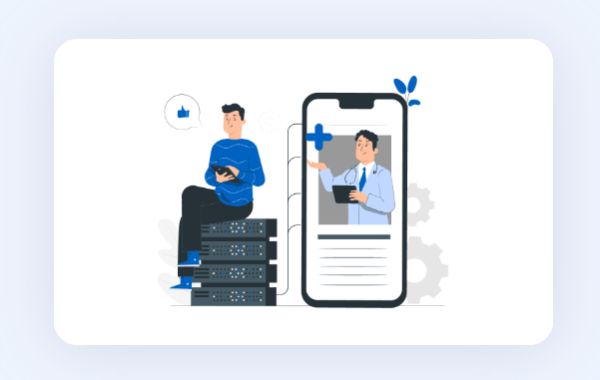The COVID-19 pandemic accelerated the adoption of telemedicine, making it an integral part of the healthcare ecosystem. In this article, we'll explore the world of telemedicine app development, highlighting its significance, essential components, and its pivotal role in shaping healthcare delivery in a post-pandemic world.
The Telemedicine Surge: A Response to Changing Healthcare Needs
Telemedicine, or telehealth, represents the practice of delivering healthcare services remotely, often through digital communication tools. The pandemic highlighted the urgency of adopting telemedicine for several critical reasons:
1. Accessibility: Telemedicine transcends geographical boundaries, ensuring that individuals in remote or underserved areas can receive medical attention without physical barriers.
2. Convenience: Patients can schedule appointments and consult with healthcare professionals from their homes, reducing the need for long commutes and waiting room delays.
3. Timely Care: Telemedicine provides swift access to medical advice, which can be life-saving in emergencies, resulting in improved patient outcomes.
4. Cost-Efficiency: Telemedicine can lead to cost savings for both patients and healthcare providers, including reduced transportation expenses and overhead costs.
5. Continuous Monitoring: Telemedicine applications have expanded to include continuous health monitoring, enabling early intervention and proactive care.
Key Components of Telemedicine App Development
Developing a successful telemedicine application involves careful consideration of various key components:
1. User-Friendly Interface: An intuitive design is essential, ensuring that both patients and healthcare professionals can navigate the app with ease.
2. Secure Communication: The security and privacy of patient data are paramount. Rigorous encryption and compliance with data protection regulations, such as HIPAA in the United States, are crucial.
3. Real-Time Interaction: Telemedicine apps should facilitate real-time features like video conferencing, chat, and file sharing to enable effective communication between patients and healthcare providers.
4. Integration with Medical Records: Seamless integration with Electronic Health Records (EHR) systems ensures that healthcare providers have access to patients' medical histories during virtual consultations.
5. IoT Integration: Incorporating Internet of Things (IoT) devices for remote monitoring of vital signs enhances diagnostic accuracy.
6. AI-Powered Tools: Implementing AI algorithms can assist in diagnosing conditions, predicting patient outcomes, and personalizing treatment plans.
Best Practices in Telemedicine App Development
To create a telemedicine app that stands out, developers should adhere to industry best practices:
1. Regulatory Compliance: Staying informed about healthcare regulations and ensuring that the app complies with these standards is paramount.
2. Performance Optimization: Prioritizing speed and performance delivers a seamless user experience.
3. Feedback Mechanisms: Incorporating features that allow users to provide feedback supports continuous improvement.
4. Scalability: Designing the app to accommodate a growing user base and evolving healthcare needs is essential.
5. Training and Support: Offering training and support to healthcare professionals using the app maximizes its effectiveness.
Conclusion
Telemedicine application development is at the forefront of healthcare innovation, revolutionizing how medical services are delivered and accessed. As technology continues to advance and patient needs evolve, telemedicine apps play a crucial role in providing high-quality, convenient, and cost-effective healthcare.
By focusing on user-friendly design, security, real-time features, integration with medical records, and compliance with healthcare regulations, developers can unlock the full potential of telemedicine. In this post-pandemic world, telemedicine applications are redefining healthcare delivery, ensuring that healthcare is accessible to all, irrespective of geographical constraints, and propelling us toward a future where healthcare is more connected and convenient than ever before.








